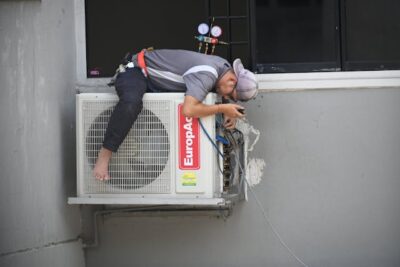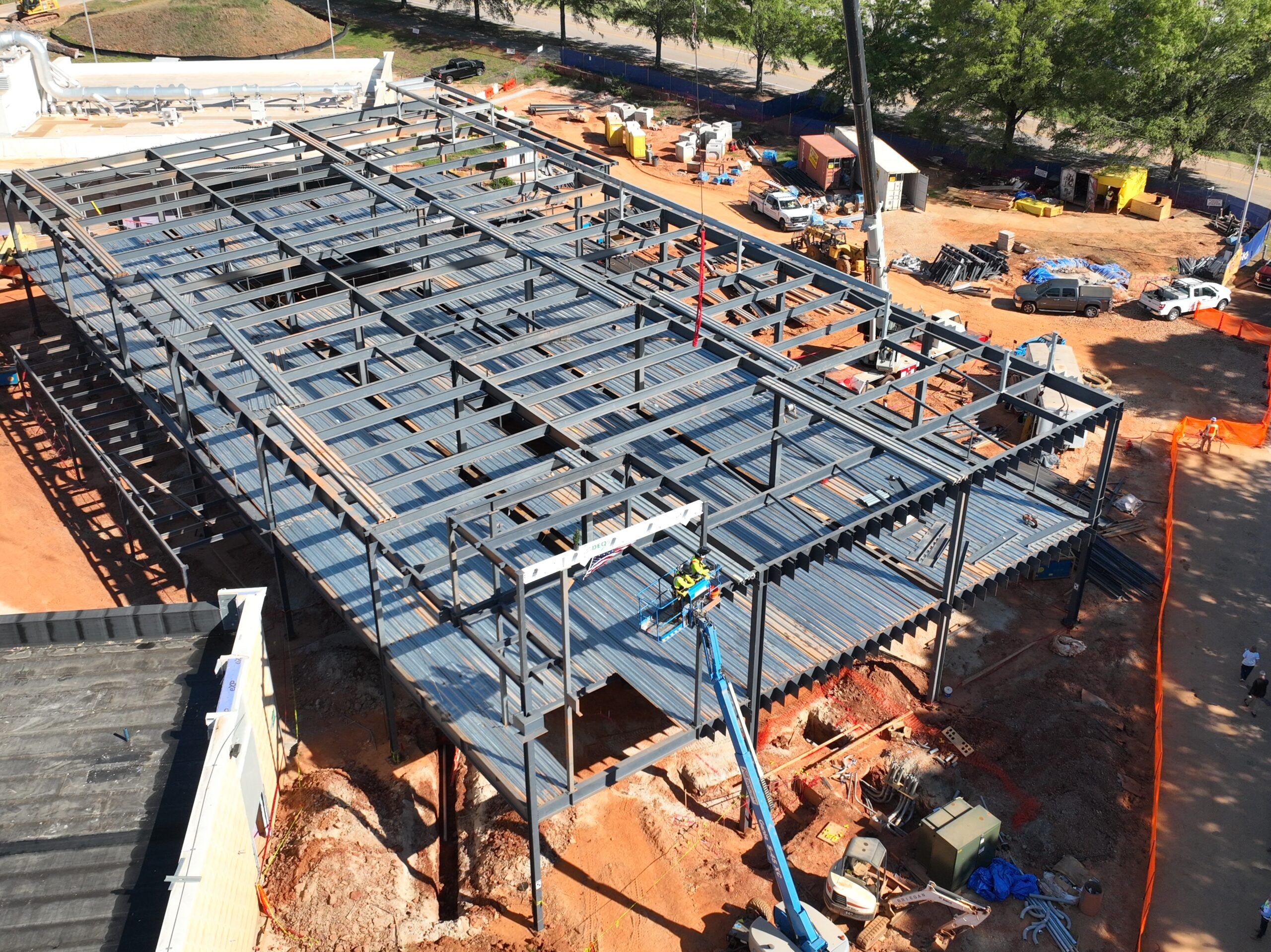For many commercial construction pros, HVAC systems fall into the “set it and forget it” category. Once installed, heat pumps are expected to do their job quietly in the background—pushing conditioned air, managing temperature zones, and keeping energy bills predictable. But that assumption can backfire fast.
Commercial heat pumps aren’t immune to wear, misalignment, and environmental stress. And when they’re pushed to the edge—like during extreme seasonal demands or under poor airflow conditions—small issues often snowball into full-blown failures. Contractors and facilities managers who rely too heavily on scheduled filter changes or reactive maintenance can end up facing longer downtimes, higher energy costs, and even warranty disputes.
In fast-growing cities where commercial development is booming, understanding the nuances of heat pump systems is more than a mechanical concern—it’s a business one. For example, professionals specializing in heat pump repair in Tucson regularly point out that desert climates introduce specific strain factors that can’t be addressed through general maintenance checklists alone. It’s a reminder that not all repair needs show up as obvious system alerts or thermostat complaints.
Let’s break down what’s really getting missed when it comes to commercial heat pump repair—and what contractors can do to prevent it.
The Illusion of “Good Enough”
Many building owners and operators believe that if the HVAC system is blowing hot or cold air, it must be working. This surface-level validation is misleading. Just because a system is running doesn’t mean it’s running efficiently—or that it’s not in the early stages of failure.
In large commercial setups, minor issues like refrigerant imbalances, failing reversing valves, or dirty coils can degrade performance gradually. These issues rarely shut the system down immediately. Instead, they cause quiet inefficiencies that go unnoticed for weeks or even months. By the time someone spots higher utility bills or lukewarm air, the repair scope has widened—and so has the invoice.
Filters Are Just the Beginning
Yes, changing filters matters. But focusing only on filters is like rotating tires without checking the brakes. Filters catch particulates, but they don’t address deeper system concerns such as:
- Short-cycling: where the unit turns on and off more frequently than it should, often due to electrical or sensor issues.
- Thermostatic expansion valve failures: which can lead to poor refrigerant flow and temperature inconsistency.
- Duct static pressure problems: particularly in buildings with long or complex duct runs that cause uneven airflow.
- Defrost cycle malfunctions: common in heat pumps, especially when outdoor coils freeze and fail to reset properly.
These are not issues that a filter change will fix—or even reveal. And many standard maintenance calls skip right over them.
Commercial vs. Residential Heat Pumps: Different Game, Different Stakes
One common misstep is treating commercial heat pumps like oversized versions of their residential counterparts. They’re not. Commercial systems are designed for higher loads, more complex zoning, and often, multi-stage control. When they fail, the fallout impacts more than just one family’s comfort—it can disrupt business operations, tenant satisfaction, and in some sectors, regulatory compliance.
Take healthcare facilities, for example. A heat pump issue in an outpatient clinic can compromise patient comfort and equipment performance. In retail, uneven heating or cooling may not only deter customers but also disrupt inventory conditions. For these reasons, repair protocols for commercial systems must account for not just technical specs but also the operational context in which they function.
Misdiagnosing the Symptoms
One of the most common contractor errors is misdiagnosis—especially when time is tight or when the repair is being done on a limited maintenance contract. Some telltale signs that are often misunderstood or misattributed include:
- Ice buildup on outdoor units is sometimes dismissed as a defrost issue when the true cause is airflow restriction or low refrigerant.
- Frequent tripping of circuit breakers may point to compressor failure, not just “electrical quirks.”
- Temperature swings between zones can result from malfunctioning sensors or actuators, not necessarily ductwork problems.
A fast fix isn’t always the right one. And commercial buildings don’t always get the second look they need.
The Seasonal Trap
Repairs tend to spike during summer and winter peaks—but that’s not necessarily when problems start. Most commercial heat pump issues begin in the shoulder seasons: spring and fall. That’s when demand is lower, and early signs of failure (like odd noises, power surges, or minor airflow imbalances) get ignored.
By the time summer hits and everyone’s scrambling to stay cool, the repair becomes urgent—and more expensive.
Contractors who plan repair inspections just before seasonal transitions can catch problems early and prevent the bigger headaches.
Hidden Efficiency Killers
Sometimes the biggest problem with a heat pump isn’t that it’s broken—it’s that it’s wasting energy.
Dirty coils, improper refrigerant charge, or stuck dampers don’t always affect basic functionality, but they kill system efficiency. This leads to:
- Higher utility bills
- Reduced system lifespan
- Poor indoor air quality
- Increased carbon footprint (which can impact LEED certifications or green building requirements)
Commercial contractors and facility managers who prioritize long-term performance over short-term comfort are more likely to schedule detailed inspections and performance tuning—not just emergency fixes.
Coordination Gaps on the Jobsite
In new builds or major renovations, HVAC work is often one piece of a larger puzzle. It’s common for mechanical contractors to be working alongside electricians, framers, and finishers. In this chaos, small HVAC oversights can lead to big repair needs down the road.
Examples include:
- Return air ducts getting blocked by last-minute layout changes
- Thermostat wiring bundled too close to high-voltage lines, causing interference
- Heat pumps installed in locations with poor airflow or service access
- Incomplete commissioning or skipped system balancing
Good project managers ask more than “Is the system in?” They ask “Is it performing as designed—and is it serviceable six months from now?”
What Contractors Can Do Differently
1. Involve HVAC Experts Early
Don’t wait until punch list time to involve the HVAC subcontractor. Get their input during mechanical planning to prevent costly retrofits or airflow issues later.
2. Demand Load Testing, Not Just Start-Up Logs
A system that “starts” isn’t necessarily ready. Load tests under different weather conditions reveal performance gaps you can’t see during a walk-through.
3. Educate Clients on Repair Signals
When handing off a commercial property, provide owners with a guide on early warning signs. Teach them that uneven airflow or higher-than-average power bills are not normal.
4. Partner with Specialists
Not all HVAC techs are equal. For advanced heat pump repair in Tucson, seasoned technicians familiar with local climate stressors and multi-zone systems will outperform generalists every time.
A System Worth Protecting
The HVAC system may be behind the scenes, but it drives a building’s success in quiet but powerful ways. Comfort, tenant retention, energy use, and even brand reputation are tied to how well those systems function.
Filters and quick checks have their place—but when it comes to heat pumps in commercial buildings, deeper insight and specialized repair knowledge make all the difference. The best contractors are the ones who look beyond the easy fixes and focus on long-term performance.












